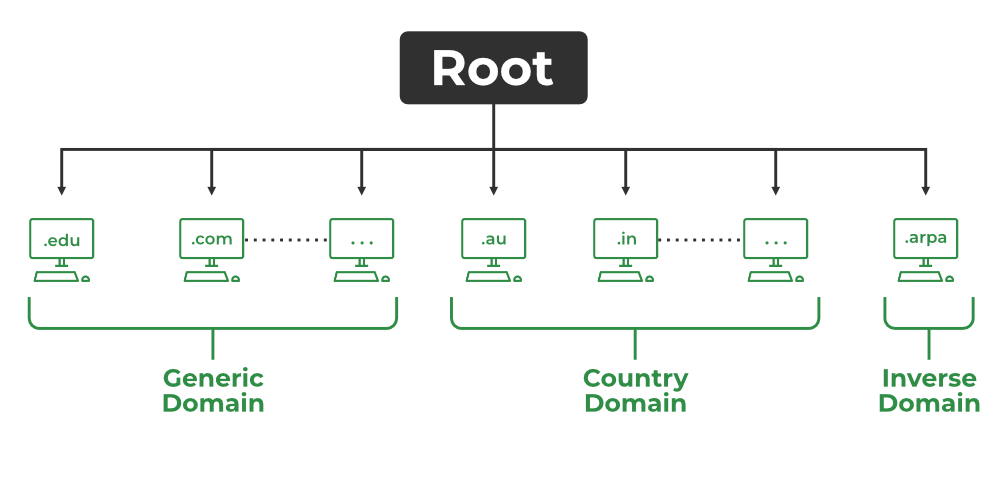The Domain Name System (DNS) is a cornerstone of the internet, functioning as its address book by converting user-friendly domain names into machine-readable IP addresses. This system allows individuals to access websites using simple, memorable names like www.example.com, rather than complex numerical IP addresses. For system administrators and DevOps professionals, a deep understanding of DNS is essential, as it plays a pivotal role in ensuring network performance, security, and reliability.
You read in this article:
How DNS Operates: A Hierarchical Structure
DNS operates through a hierarchical framework involving multiple types of servers, each with a distinct role in the domain name resolution process:
- DNS Resolver (Recursive Resolver):
Typically provided by Internet Service Providers (ISPs) or public DNS services such as Google DNS (8.8.8.8) or Cloudflare (1.1.1.1), the DNS resolver acts as the first point of contact for a user’s query. It functions as an intermediary, communicating with other DNS servers to locate the correct IP address. - Root Nameservers:
Positioned at the top of the DNS hierarchy, root nameservers provide information about top-level domain (TLD) servers. When queried, they direct the resolver to the appropriate TLD server based on the domain extension (e.g., .com, .org). - TLD Nameservers:
These servers manage specific domain extensions and store information about domains within their respective TLDs. They guide the resolver to the authoritative nameserver for the requested domain. - Authoritative Nameservers:
These servers hold the definitive DNS records for a domain, providing the final answer to queries about the domain’s IP address and associated records.
The DNS resolution process involves the resolver querying each of these server types sequentially until it retrieves the necessary IP address, enabling the user to connect to the desired website.

Key DNS Record Types and Their Functions
DNS records, stored in authoritative nameservers, provide critical information about a domain. Here are the most common types:
- A (Address) Record: Maps a domain name to its corresponding IPv4 address.
- AAAA (Quad A) Record: Maps a domain name to its corresponding IPv6 address.
- CNAME (Canonical Name) Record: Redirects one domain name to another, allowing multiple domains to point to the same IP address.
- MX (Mail Exchange) Record: Specifies the mail servers responsible for receiving emails for the domain.
- NS (Name Server) Record: Identifies the authoritative DNS servers for the domain.
- TXT (Text) Record: Stores text-based information, often used for verification and security purposes, such as SPF (Sender Policy Framework) records.
Each record type serves a unique purpose, and their accurate configuration is vital for the domain’s functionality and security.
Did You Know You Can Buy Dedicated Server Or VPS, Fast And Secure With Cryptocurrency?
Delivered to you as you blink
Best Practices for Domain Name System Configuration
Proper DNS configuration is critical for maintaining network reliability, security, and performance. Below are essential strategies for system administrators and DevOps professionals:
1. Select Reliable DNS Servers
Choosing dependable DNS servers is the foundation of network performance. Options include:
- ISP-Provided DNS Servers: Default servers offered by ISPs, though their performance may vary.
- Public DNS Servers: Third-party services like Google DNS (8.8.8.8) or Cloudflare (1.1.1.1), known for their speed and security.
- Private DNS Servers: Internally managed servers that offer greater control over DNS configurations.
Evaluate your organization’s needs to determine the most suitable DNS server setup.
2. Implement Redundancy
To avoid single points of failure, configure multiple DNS servers:
- Primary and Secondary Servers: Establish at least two DNS servers to ensure continuity if one fails.
- Geographical Distribution: Deploy servers in diverse locations to enhance resilience against regional outages.
Redundancy ensures uninterrupted DNS resolution during server failures or maintenance.
3. Strengthen DNS Security
DNS security is critical to protect against threats such as spoofing and cache poisoning:
- DNSSEC (DNS Security Extensions): Implement DNSSEC to authenticate DNS responses and prevent malicious attacks.
- Access Controls: Restrict access to DNS servers to authorized personnel and systems.
- Regular Updates: Keep DNS server software up to date to address vulnerabilities.
A secure DNS infrastructure is essential for maintaining network integrity.
4. Optimize Performance with Caching
Caching enhances DNS resolution speed and reduces latency:
- DNS Resolver Caching: Resolvers temporarily store query results, minimizing repeated queries to authoritative servers.
- Client-Side Caching: Configure client devices to cache DNS responses, improving user experience.
Effective caching strategies can significantly boost network performance.
5. Monitor and Audit DNS Traffic
Regular monitoring helps detect anomalies and maintain optimal performance:
- Traffic Analysis: Use tools to analyze DNS query patterns and identify unusual activity.
- Logging: Maintain detailed logs of DNS queries and responses for auditing and troubleshooting.
Proactive monitoring enables early issue detection and informed decision-making.
6. Ensure Accurate DNS Record Configuration
Accurate DNS records are vital for domain functionality:
- Regular Audits: Periodically review DNS records to ensure they are up to date and correct.
Conclusion
The Domain Name System (DNS) is a critical component of the internet, enabling seamless access to websites and services. For system administrators and DevOps professionals, mastering DNS configuration and management is essential for ensuring network reliability, security, and performance. By adhering to best practices such as selecting reliable servers, implementing redundancy, securing DNS infrastructure, and optimizing performance, organizations can maintain a robust and efficient DNS setup. Regular monitoring and accurate record configuration further enhance the system’s resilience, ensuring uninterrupted service for users.
Frequently Asked Questions
DNSSEC (DNS Security Extensions) is a protocol that adds a layer of authentication to DNS responses, preventing attacks like DNS spoofing and cache poisoning. It ensures the integrity and authenticity of DNS data, making it a critical component of DNS security.
Caching temporarily stores DNS query results, reducing the need for repeated queries to authoritative servers. This speeds up resolution times and minimizes latency, enhancing the overall user experience.
Improper DNS configuration can lead to:
Downtime: Misconfigured records or server failures can make websites inaccessible.
Security Vulnerabilities: Lack of DNSSEC or outdated software can expose the network to attacks.
Performance Issues: Poorly optimized DNS setups can result in slow resolution times and increased latency.
Effective DNS traffic monitoring involves:
Using Analytical Tools: Tools that track DNS query patterns and identify anomalies.
Maintaining Logs: Keeping detailed records of DNS queries and responses for auditing and troubleshooting.
Regular monitoring helps detect issues early and ensures optimal DNS performance.
DNS Resolver: Acts as an intermediary that queries other DNS servers to find the correct IP address for a domain.
Authoritative Nameserver: Holds the definitive DNS records for a domain and provides the final answer to queries about its IP address and associated records.
Redundancy ensures uninterrupted DNS resolution by providing backup servers in case of failures. Configuring primary and secondary DNS servers, as well as geographically distributing them, enhances resilience and minimizes downtime.
DNS records should be audited regularly, ideally quarterly or whenever significant changes are made to the network. This ensures that records remain accurate and up to date, preventing potential issues.
Yes, public DNS servers like Google DNS (8.8.8.8) or Cloudflare (1.1.1.1) are reliable options for many organizations. However, businesses with specific security or performance requirements may prefer private DNS servers for greater control.
TLD (Top-Level Domain) nameservers manage specific domain extensions (e.g., .com, .org) and guide the DNS resolver to the authoritative nameserver for the requested domain.
DNS impacts email delivery through MX (Mail Exchange) records, which specify the mail servers responsible for receiving emails for a domain. Proper configuration of MX records is essential to ensure reliable email delivery.
Common tools for troubleshooting DNS issues include:
nslookup: A command-line tool for querying DNS records.
dig: A versatile tool for querying DNS servers and retrieving detailed information.
DNS monitoring platforms: Tools like SolarWinds or Datadog for real-time DNS traffic analysis.
Refrences
- https://www.geeksforgeeks.org/working-of-domain-name-system-dns-server/?utm_source=centerglo.com
- https://www.cloudflare.com/learning/dns/what-is-dns/?utm_source=centerglo.com
- https://thecybersecguru.com/networking/dns-101-your-comprehensive-guide/?utm_source=centerglo.com
- https://www.webasha.com/blog/the-complete-guide-to-dns-how-domain-name-system-works-and-powers-the-internet/?utm_source=centerglo.com







